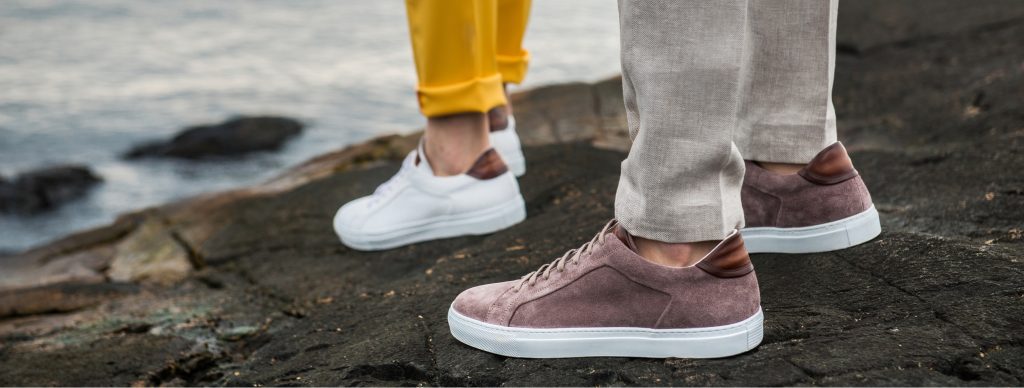Buying a new pair of shoes can be exciting and fun, but it can also be nerve-wracking. What if you buy shoes that look great but turn out to be a pair of junk after two months? Here’s a guide for how to buy shoes that will last.

What Do You Need Shoes For?
The first step to getting shoes that will last is to know what you need them for. It’s important that they look good and are comfortable, but if you buy dress shoes when you’re spending most of the day at an active job lifting things or casual skate shoes when you want to play basketball you’ll be out of luck and the shoes will wear down quickly.
If you want to lift heavy weights, getting a thin-soled running shoe could also be a bad move, and so on. It’s important to get fairly specific about what you’re going to be using your shoes for, if possible.
Knowing how much you’ll use your new shoes and what they are for will ensure that you get the right functionality, leading to much longer shoe life.¹
The Shape and Sole
The shape of your shoe should fit your foot perfectly and be made of durable material with strong and flexible soles. If you try to buy a shoe that doesn’t really fit it will end up rubbing against it and wearing it down.
Make sure to ask the salesperson selling you shoes about what kind of material they’re made of and the quality of the sole as well. Without a good sole a shoe will wear down and be junk in a short time, especially if you’re using it a lot. If you’re going for a dress shoe, leather is the best option.²
Types of Leather
When it comes to synthetic and canvas there are many high-quality options out there. It’s a good idea to read reviews and try walking around in the shoes a little bit before deciding to purchase them.
If you’re buying dress shoes it is best to buy full-grain leather which ages gracefully but tend to cost more. Corrected leather that’s been buffed and made smooth tends to not feel as natural or comfortable and may wear down more quickly, so sometimes it can be worth spending a little more for full-grain. Corrected leather may often be listed as leather, genuine or “top” grain, so be sure to specifically find out whether a pair of dress shoes are actually full grain leather.³
Watch Out for Warning Signs
One of the biggest problems when people buy shoes is they ignore warning signs. If the shoes are poking you a bit in one part of your foot, the sole feels weak or lopsided or the leather or material quality has some cracking and frayed areas you should be cautious and consider buying a different pair of shoes instead.
Watch out for loose stitching, gaps between the sole and body of the shoe and look for splotches of glue or low-quality construction that are warning signs of a shoe that will be in the trash bin within a month or two. Keep in mind that while price often reflects quality it’s not always the case and even an expensive shoe can be a lemon.¹
Warranty
In addition, it’s a good idea to check if the shoes have a warranty and if you can return them within a certain time frame. Many stores will offer an exchange within 30 days, for example, although often only if the shoes are not worn. A warranty takes some of the pressure off you and allows you to wear the shoes once or twice or take them home and think longer about your purchase and read more reviews.⁴
[1] https://www.menshealth.com/style/a25955416/tips-for-shoe-shopping/
[2] https://buymeonce.com/blogs/articles-tips/only-shoes-youll-ever-need-buy
[3] https://www.csmonitor.com/Business/Saving-Money/2015/0711/How-to-find-men-s-dress-shoes-that-will-last-for-decades
[4] https://www.scoopwhoop.com/how-to-buy-the-right-pair-of-shoes-guide/